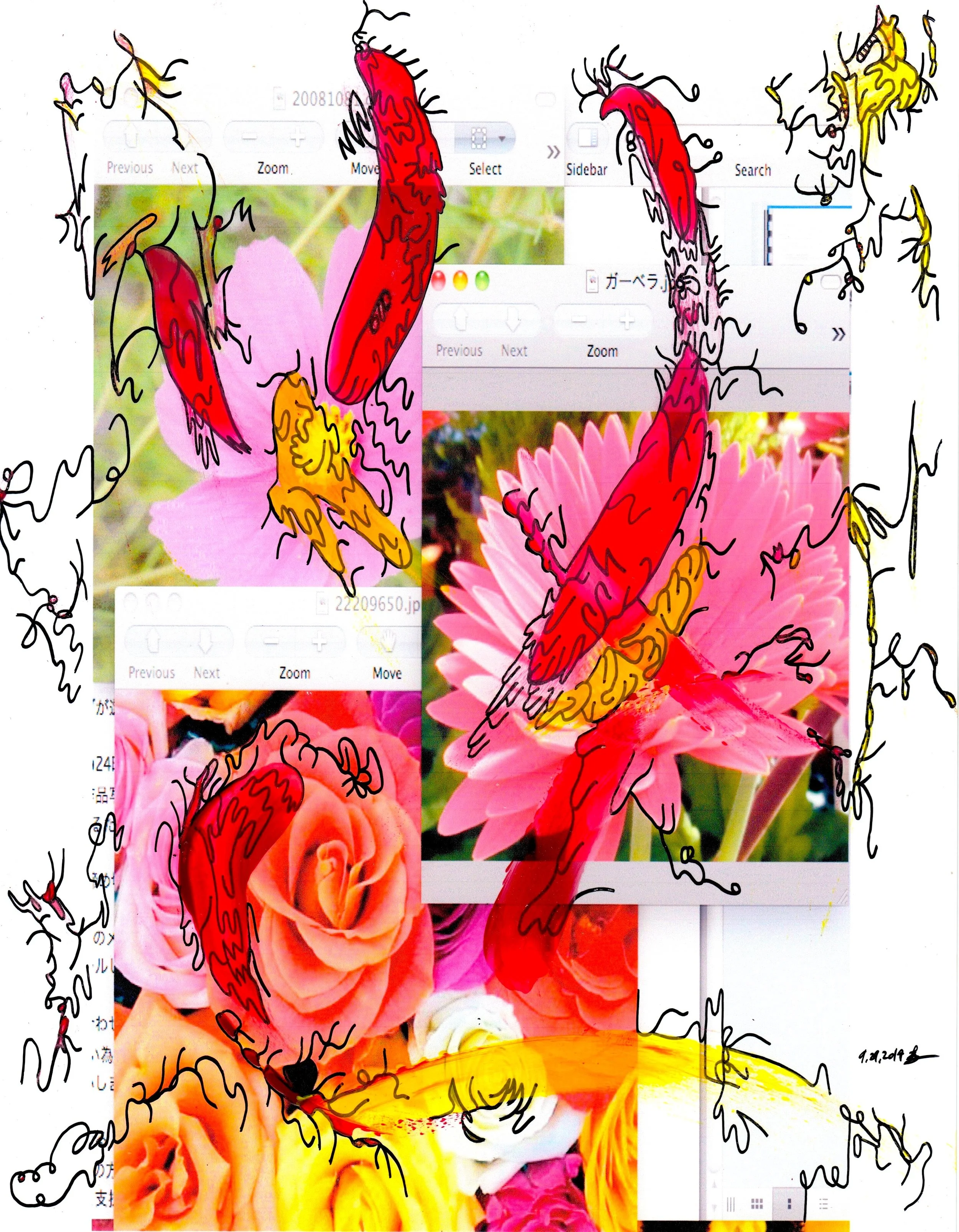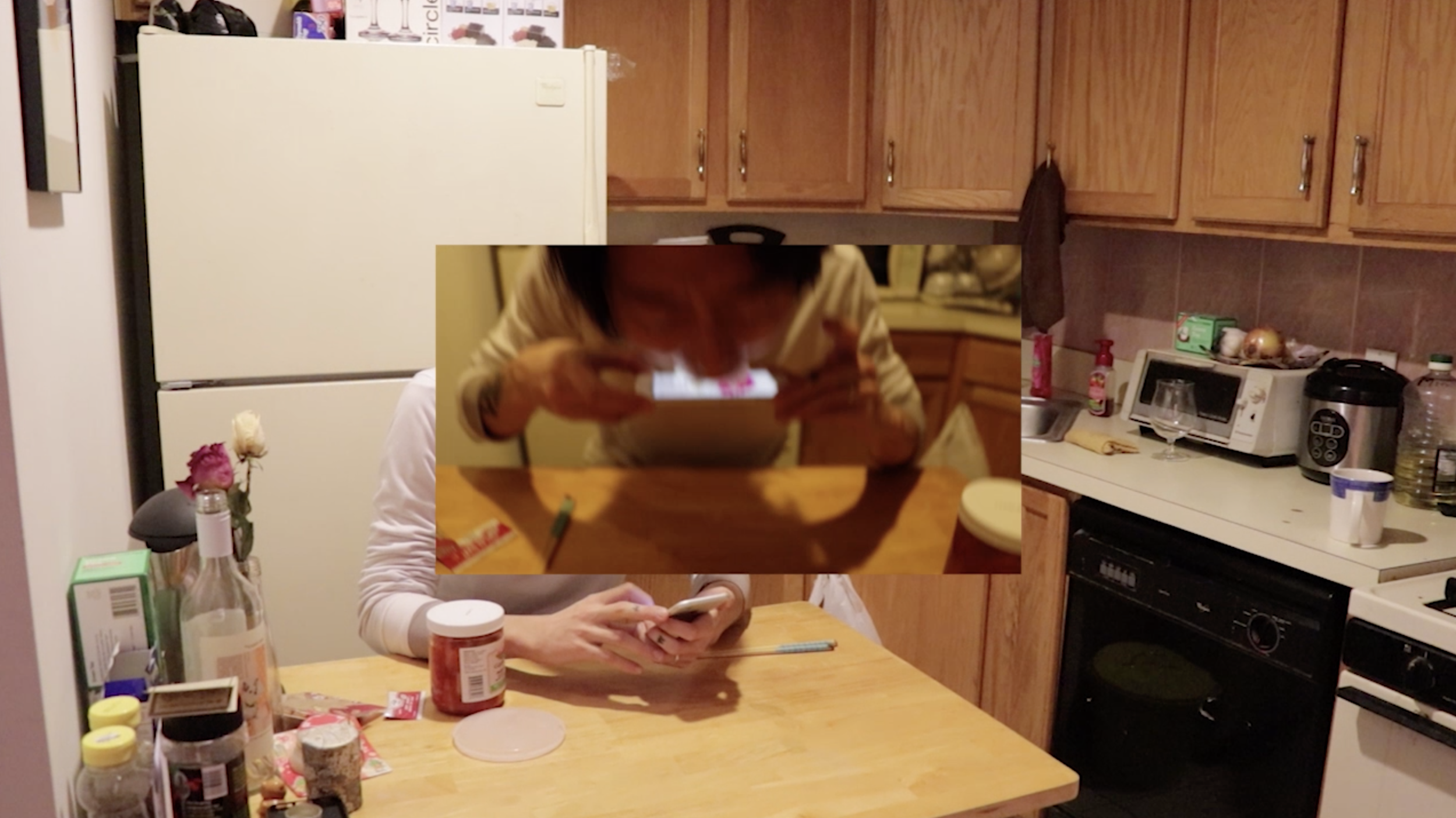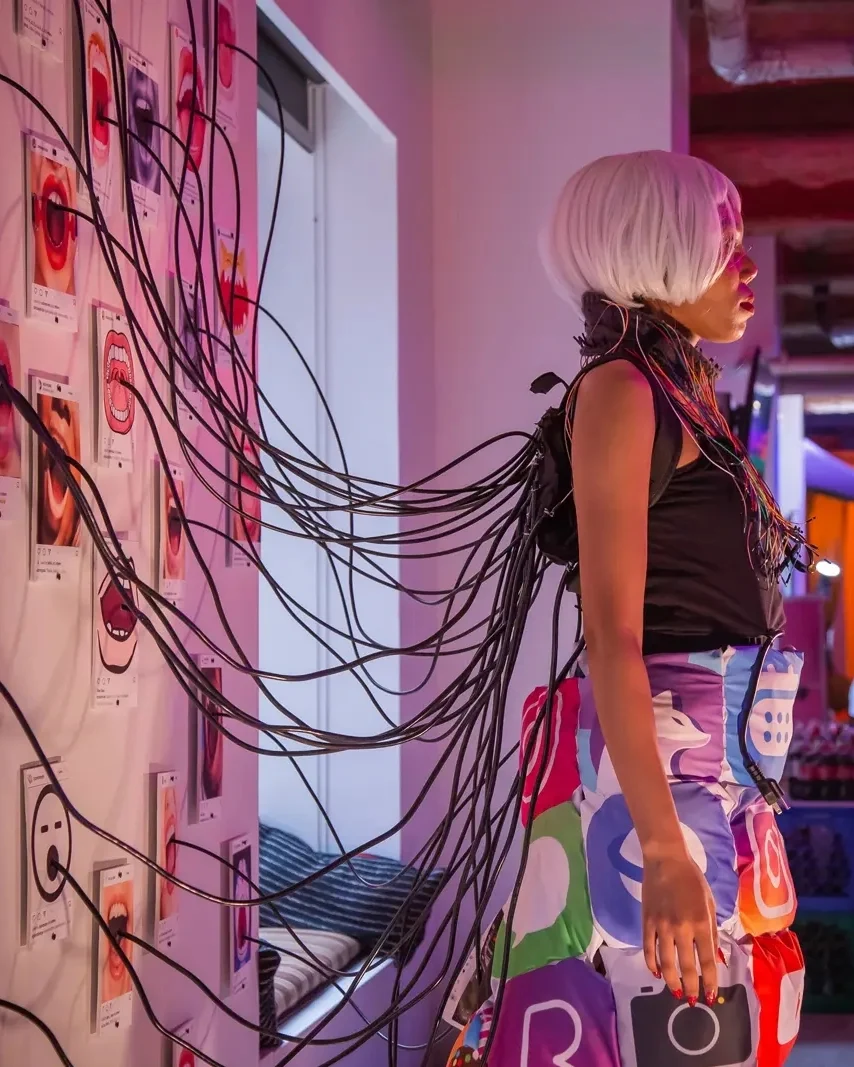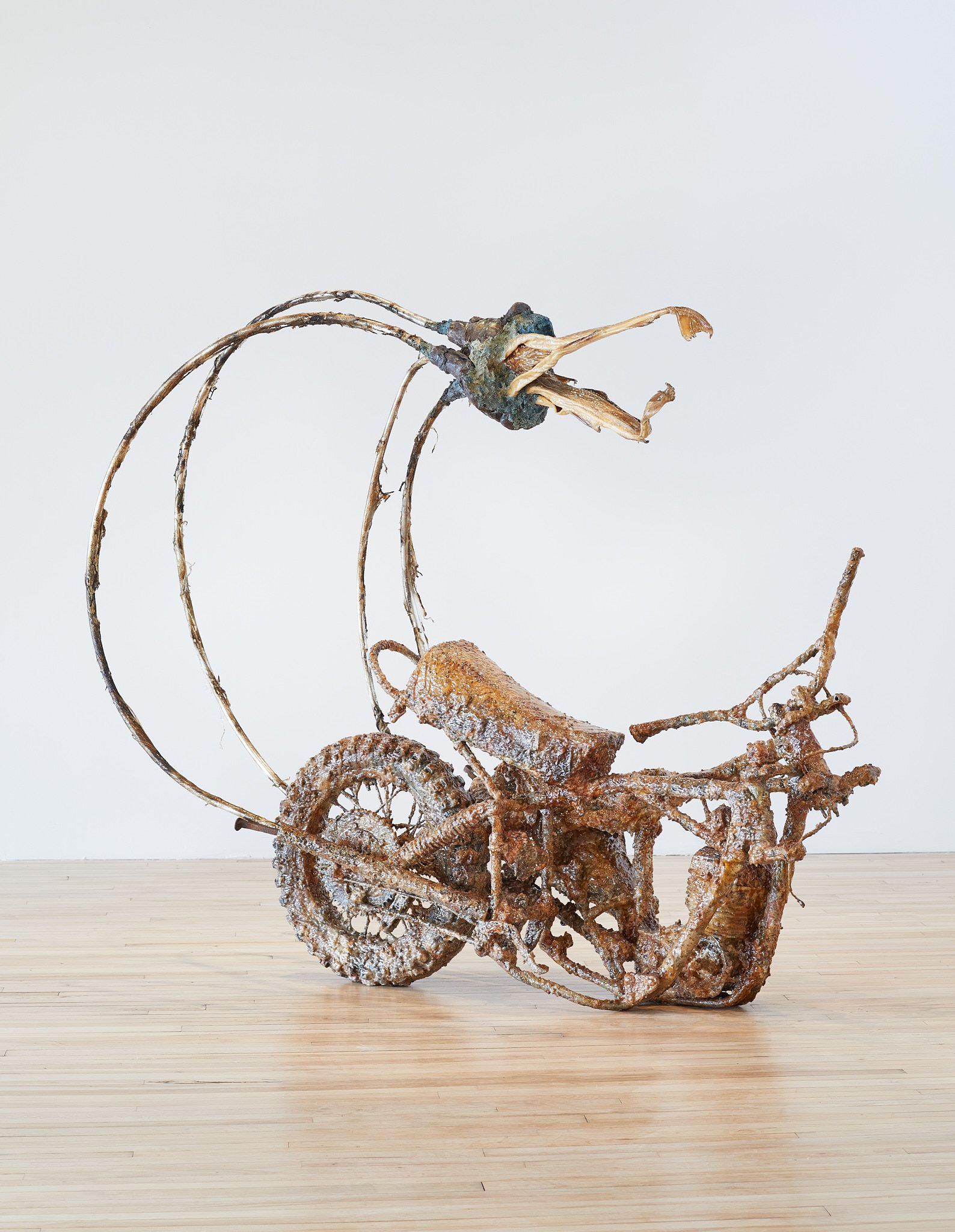Between Digital and Analog
Seungjin Lee is an artist and performer who makes work based around a concept that he calls DigiAna: art that embraces both digital and analog processes. Roman Kalinovski, senior editor of Arcade Project, sat down with Lee to discuss the nature and origins of his DigiAna concept and how his artwork expresses this vision of digital and analog synthesis.
Still from the conversation salon Relation Between Paint and Digital in DigiAna Studio. Left to right: Seungjin Lee, Roman Kalinovski, and Tommy Mintz.
Arcade Project: You’ve been making art under the banner of “DigiAna” for a while. What are the origins of this concept?
Seungjin Lee: It started when I was studying at Tama Art University in Japan. I had originally wanted to study illustration or graphic design, but I ended up going into the information design program instead. The program served as an introduction to the world of digital and media art for me. I started printing out screenshots from my computer and drawing and painting on top of them without any real plan or goal in mind, just allowing my hand to respond to the computer’s output. At the same time, I was starting to look at a lot of fine art, especially Takashi Murakami’s work which was becoming prominent in popular culture at the time.
Flower, 2013. Acrylic and pen on digital print, 8.5x11 in.
AP: Murakami describes his work as “Superflat.” You describe your work as “DigiAna.” Do you see any connection between his way of seeing the world, and expressing it through art, and your own?
SL: Superflat was a response to what Murakami saw as the flattening out of Japanese history and culture in the aftermath of the Second World War. My idea for DigiAna came as a response to internet culture and the sense of alienation that comes from being caught in the constant flow of ever-changing information. This alienation also affects the user’s sense of time, as human thought processes are accelerated to keep up with information coming from computer processors cycling billions of times a second. In bringing analog and human-centric processes into the digital realm, DigiAna uses the digital as a tool for the creation of something new, not as an end in itself. Reimagining the digital world from an analog and human perspective becomes an almost spiritual act, drawing attention to new dimensions and new meanings hidden beneath the shell of the digital.
GP50, 2021. Acrylic on canvas, 50x50 in.
AP: What was the first work that you made that you consider to be DigiAna?
SL: My glitch paintings: each one was created using a combination of digital and analog processes. I started out by making an abstract black and white painting using random processes, like throwing or dripping paint on the canvas. I then photographed the painting and ran the photo through glitch software on my computer, scrambling its bits and bytes and introducing digital randomness on top of the analog randomness of the abstraction itself. Finally, I make a new painting based on the glitched image, recreating every detail of the digital and analog randomness. These paintings embody my vision of DigiAna: a new form of expression that synthesizes the digital with the real.
Still from Baku, 2020. Digital video, running time 11:44.
AP: Your video work also showcases this synthesis, doesn’t it? Your video Baku (2020), for example, features clips from digital videos from around the internet enmeshed with your daily life in your apartment. Could you elaborate on the origins of your video art practice and how it’s developed over the years?
SL: My video art, ultimately, has its roots in 80s and 90s K-Pop and idol culture. Growing up in South Korea at the time, almost all of my exposure to music and popular culture came through these idol groups. When I moved to Japan and started junior high school, I became aware of many different types of music and expression: my friends would rent CDs from rental shops and I was able to listen to cool music, like classic rock and hip-hop, rather than the mass-produced idol pop I had previously known. I became particularly interested in hip-hop and started doing it myself, and the first videos I made were music videos for some of my tracks. That was when I started introducing glitch effects and overlaying clips from other YouTube videos or Google image search results, and this way of working found its way into other video pieces, like Baku and Home (2021). Hip-hop is still a major part of my work as well, showing up in my videos and in performances like Non-Language Hip-Hop where the sound and vocalization is the main focus rather than any lyrical content.
View of DigiAna Performance Show at Synesthesia Gallery, Brooklyn, NY, 2019.
AP: Given the acceleration of technology, especially AI, which seeks to remove the human element from creative production, what role do you see DigiAna playing in this new technological and artistic environment? Does DigiAna resist this trend, or embrace it?
SL: The relationship between humanity and art is changing, and DigiAna offers a viewpoint that encourages actual human participation while pushing ahead with advancements in technology. There is no question that artistic production is changing, and I think that it’s important to keep things grounded in a sense of embodiment rather than letting everything fly away into a virtual abyss. For example, I recently collaborated with the artist Momo on a piece for the ChaShaMa Gala that uses augmented reality (AR) technology. The AR software is triggered by the costume Momo wears during the performance, and viewers can use their phones to experience the digital side of the work, which is tethered to the human performer and her costume. This is an example of where I see DigiAna going in the future: finding new forms of expression by adopting advanced technologies while keeping things grounded in embodiment and human concerns.
View of Momo in costume at the ChaShaMa Gala, 2023.









